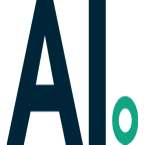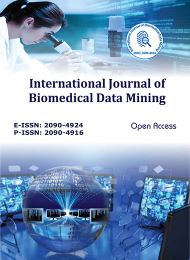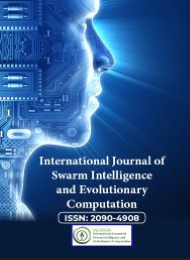Theme: Theme: Emerging Future Technologies of Big Data and Data Mining
Dataanalysis-2023
- About Conference
- Session and Tracks
- Market Analysis
- Abstract Submission Criteria and Eligibility
- Participation Options and Benefits
Conference Series invites all participants worldwide to attend the 22nd International Conference on Big Data & Data Analytics (DATA ANALYSIS-2023) (ICBDDA-2023) on July 24-25, 2023 in Amsterdam, Netherlands cordially invites you to Oral presentations, poster presentations and exhibitors sharing their knowledge. The main theme of the conference is "The Emergence of Future Technologies in Big Data and Data Mining".(ICBDDA-2023) The conference aims to extend its reach in the field of big data and data mining, and lectures by experts and presentations by young researchers will keep the conference inspired and keep you enthusiastic. We feel that our expert organizing committee is our major asset. But your presence at the venue adds another feather to the crown of DATA ANALYSIS-2023. (ICBDDA-2023)
Data analysis, which extracts hidden and predictive information from large databases, is a powerful new technology with great potential to help companies focus on the most important information in their data warehouses. Data Analysis-2023 (ICBDDA-2023) consists of the following 15 tracks and sessions designed to provide a comprehensive session that addresses current issues in big data and data analytics. (ICBDDA-2023) Data analytics tools predict future trends and behaviours and enable businesses to make proactive, knowledge-driven decisions. The automated future analysis provided by data mining goes beyond the analysis of past events provided by the retrospective tools typical of decision support systems. Big data and data analytics tools (ICBDDA-2023) can answer business problems that traditionally take too long to solve.
Track 1: Big Data Management
Big data management is the organization, management and governance of large amounts of structured and unstructured data. The goal of big data operations is to ensure high data quality and availability for business intelligence and big data analytics applications. Big data analytics help associations leverage data and use it to identify new opportunities. This results in smarter business moves, more efficient operations, higher profits and happier customers. Companies using big data along with advanced analytics gain value in a number of ways, such as reducing costs. Data management capabilities are a core set of business processes, such as finance, human resources or facilities management, providing resources to help establish and adopt best practices across data operations disciplines, and are always required throughout the entire lifecycle.
Track 2: Big Data in Nursing Research
The term "big data" refers to the amount of data that is beyond human comprehension and cannot be managed by standard computing systems. Big data is becoming more prevalent in nursing and healthcare settings. Data scientists are constantly developing knowledge and specific methods for managing this data. Nursing professionals who can leverage this data can use it to build holistic treatment strategies for their patients, which more effectively address their needs. Using big data in healthcare can help patients take a more proactive approach to their care. Nurse researchers used secondary data analysis in epidemiological studies, risk assessments, skills assessments, comparisons of practices in different geographic areas, and outcome studies.
Track 3: Big Data Technologies
Big data technologies are software tools used to manage all types of data sets and transform them into business insights. In data science careers like big data engineers, sophisticated analytics evaluate and process vast amounts of data. The most important and most awaited technology is now in sight. That's Apache Spark. It is an open-source analytics engine that supports big data processing. Big data analytics help organizations leverage data and use it to identify new opportunities. The result is smarter business moves, more efficient operations, higher profits and happier customers. Companies that use big data with advanced analytics gain value in a number of ways, including: cut down the money.
Trending Technologies in 2023
- AI and machine learning
- cyber security
- Metaverse
- Devops
- full stack development
- Blockchain
- cloud computing
- Hyper automation
Track 4: Big Data Analytics
Big data analytics is the use of advanced analytic techniques on very large and diverse data sets containing structured, semi-structured and unstructured data ranging in size from terabytes to zeta bytes from disparate sources. Here are some examples: Use analytics to understand customer behaviour to optimize customer experience. Predict future trends to make better business decisions. Improve your marketing campaigns by understanding what works and what doesn't. At different stages of business analytics, huge amounts of data are processed, and there are five types of analytics: descriptive, diagnostic, predictive, prescriptive, and cognitive analytics, depending on the requirements of the analytics type.
Track 5: Big Data Algorithm
Big data is big data that cannot fit in the main memory of a single machine. Internet search, network traffic monitoring, machine learning, scientific computing, signal processing and other fields need to process big data through efficient algorithms. Naive Bayesian models are easy to build and useful for massive datasets. It is simple and has a reputation for outperforming highly complex classification methods. Decision Tree Algorithm, Support Vector Method Algorithm, Logistic Regression, K-Means Clustering Algorithm, and Naive Bayesian Brackets are 5 entry-level ML algorithms.
Track 6: Big Data Optimization
Data optimization is the practice of changing an organization's data strategy to improve the speed and efficiency with which data is extracted, analysed, and used. The goal of optimization is to find the best acceptable answer given some conditions of the problem. For a problem, there may be different solutions, in order to compare them and choose the optimal solution; a function called objective function is defined. The goal of optimization is to achieve the "best" design with respect to a set of priority criteria or constraints. These include factors such as maximizing productivity, strength, reliability, longevity, efficiency and utilization. Data optimization alleviates this problem by reorganizing datasets and filtering out inaccuracies and noise. The result is often a dramatic increase in the speed at which actionable information is extracted, analysed, and made available to decision makers.
Track 7: Forecasting from Big Data
A forecast is a forecast made by studying historical data and past patterns. Businesses use software tools and systems to analyse large volumes of data collected over time. Predictive research based on big data is usually divided into three main steps, namely data collection (collecting big data from relevant sources), data processing (pre-processing and representing big data and extracting predictive knowledge) and predictive improvement (by combining extracted predictive data). While there is a wide range of commonly used quantitative budget forecasting tools, in this article we focus on the first four methods: (1) straight line method, (2) moving average method, (3) simple linear regression method, and (4) multivariate Normal linear regression.
Track 8: Big Data Applications, Challenges and Opportunities
Big data can enhance the discovery, access, availability, utilization and supply of information in companies and supply chains. It can help discover new data sets that have not yet been used to drive value. Big data applications process and manage large amounts of data, often measured in terabytes or more. Processing such large data volumes can be time-consuming, taking months to process. Challenges in big data are real implementation barriers. These require immediate attention and need to be dealt with, because if not dealt with, technical glitches may occur, which may also lead to some unpleasant results. Big data challenges include storing and analysing extremely large and rapidly growing amounts of data. Big data can reduce long-term costs, improve investment capabilities, and improve understanding of cost drivers and impacts.
- More integration and collaboration
- Strengthen logistics
- More Efficient Inventory Management
- improve risk management
Track 9: Data Mining and Machine Learning
Data mining aims to extract rules from large amounts of data, while machine learning teaches computers how to learn and understand given parameters. Or in other words, data mining is just a research method that can determine a specific result based on the total amount of data collected. Machine learning uses data mining and computational intelligence algorithms to improve decision-making models. Example applications of data mining and machine learning in business use include: Search engines: Adapting search engine results to search behaviour and search user preferences. The job of a data scientist is to examine data to make predictions, and without data mining and machine learning, a data scientist cannot do their job. They must perform data mining to characterize data, and they must integrate machine learning algorithms to make predictions.
Track 10: Data Mining Tools and Software
Data mining software tools and techniques enable organizations to foresee future market trends and make critical business decisions at critical moments. Data mining is an essential part of data science that employs advanced data analysis to derive insightful information from large amounts of data. Google AI Platform includes several databases, machine learning libraries, and other tools that users can use in the cloud to perform data mining and other data science functions. Data mining can also detect which offers are most valued by customers or increase sales in the checkout queue.
Best Data Mining Tools of 2022
- Monkey Learning | No Code Text Mining Tool
- Quick Miner | Drag and drop workflow or data mining in Python
- Oracle Data Mining | Predictive Data Mining Models
- IBM SPSS Modeler | Predictive Analytics Platform for Data Scientists
- Vika | Open source software for data mining
Track 11: Data Privacy and Ethics
Data privacy is the right of citizens to control how their personal information is collected and used. Data protection is a subset of privacy. This is because protecting user data and sensitive information is the first step in protecting user data privacy. US data privacy laws are regulated at the federal level. Do not use or disclose personal data related to the content. Any other personal data shall not be used or disclosed without the express, separate and personal consent of the customer. Do not store, use or disclose any Customer Data unless Company is required by applicable law or regulation to continue to store such data. Businesses that apply key ethical principles such as fairness, privacy, transparency, and accountability to their AI models and outputs can maintain trust in how their data is used, building greater goodwill and loyalty, thereby enhancing their reputation and brand value.
Track 12: Data Mining Tasks, Processes and Analysis
There are many data mining tasks like classification, forecasting, time series analysis, association, clustering, summarization, etc. All of these tasks are either predictive or descriptive data mining tasks. A mining task brings together the information needed to start a training run and compute a mining model. This information includes mining settings and input data definitions. Intelligent Miner provides user-defined methods to define mining tasks. You can also define tasks for test runs. Data mining is both specific algorithms and models and an analytical process. Like the CIA intelligence process, the CRISP-DM process model is also divided into six steps: business understanding, data understanding, data preparation, modelling, assessment, and deployment.
Track 13: Data Warehousing
A data warehouse integrates data and information collected from various sources into a comprehensive database. For example, a data warehouse might combine customer information from an organization's point-of-sale system, mailing lists, website, and comment cards. A data warehouse is a central repository of information that can be analysed to make more informed decisions. Data flows into data warehouses from transactional systems, relational databases, and other sources, often on a regular basis. SQL Data Warehouse is a cloud-based enterprise data warehouse (EDW) that leverages massively parallel processing (MPP) to quickly run complex queries across petabytes of data. Use a SQL data warehouse as a key component of a big data solution.
Track 14: Cloud computing
Cloud computing is the on-demand availability of computer system resources, especially data storage and computing power, without direct active management by users. Large clouds often have functions distributed across multiple locations, each of which is a data centre. Simply put, cloud computing is the delivery of computing services—including servers, storage, databases, networking, software, analytics, and intelligence—over the Internet (“the cloud”) to provide faster innovation, flexible resources, and economies of scale. Cloud computing makes data backup, disaster recovery, and business continuity easier and less expensive because data can be mirrored at multiple redundant sites on the cloud provider's network. They don't float in cyberspace. Cloud space exists on individual servers in data centres and server farms around the world. Data centres and hosting providers provide server space for cloud computing.
Track 15: Big Data Tools and Systems
Big data is the combination of structured, semi-structured, and unstructured data collected by an organization to mine information for use in machine learning projects, predictive modelling, and other advanced analytical applications. Data mining techniques such as clustering, prediction, classification, and decision trees are used to analyse big data. Apache Hadoop, Apache spark, Apache Storm, Mongo DB, NOSQL, HPCC are tools used to process big data. Big data technologies such as cloud-based analytics can significantly reduce the cost of storing large amounts of data (such as data lakes). In addition, big data analytics help organizations find more efficient ways to do business. Make better decisions faster.
Businesses are looking to leverage big data to provide better customer service, which can help increase profits. Improving the customer experience is paramount for the best companies. Other points include improved target marketing, reduced costs, and improved process effectiveness. Big data technologies help companies store large amounts of data and offer significant cost advantages. Similar technologies include full analytics and Hadoop.
Over time, big data analytics has evolved with the takeover of agile technology and increased focus on advanced analytics. No single technology encompasses big data analytics. Several technologies work together to help businesses get the best value from their information. Among them are machine learning, artificial intelligence, monetary computing, Hadoop, in-memory analytics and predictive analytics. These technological trends are likely to drive the demand for big data analytics during the forecast period.
Financial services, retail, e-commerce, manufacturing, and telecommunications are some of the major industries using big data results. Business owners are investing less in big data solutions to optimize operations and manage their data businesses. Vendors favour big data solutions for better force chain management.
Presentation Requirements: (ICBDDA-2023)
- Participating authors are answerable for registration, travel, and hotel costs. Note: Those with submitted abstracts will get an acknowledgment mail enabling them to enrol for the gathering.
- Abstracts will be compiled, and conference books are made available to participants at the conference. (ICBDDA-2023)
- Any presenter who is unable to attend should arrange for another qualified individual to present the paper/poster in question. If such a change is necessary, please notify our conference team
Submission Options:
- Oral paper introductions will have 30-minute schedule time slot. The keynote session will have for 45-minute presentation duration, workshop/special session will have 1-hour long schedule opening and symposium will have 1-hour long availability followed by 5-minute Q&A session.
- Graduate and master’s understudies are qualified to present their abstracts under poster and e-poster presentation category.
- Ph.D. understudies are qualified to submit their abstract under special YRF (Young Researcher's Forum), (ICBDDA-2023) poster and e-poster presentation category.
- NOTE: YRF category includes short oral presentation especially for Ph. D. students
- Extended abstract: Submissions should utilize the Abstract Template. (ICBDDA-2023) Papers submitted in this category may represent original empirical research, theoretical development, reviews, or critiques.
Participation Options: Data Analysis Conference (ICBDDA-2023) provides the participants with different modes or ways to participate such as Delegate or Speaker under ACADEMIC / STUDENT / BUSINESS Category. Mode of participation is Online through Power Point Presentation/ Video Presentation on Cisco Webinars.
- Keynote speaker (ICBDDA-2023): 45-50 minutes
- Speaker (oral presentation): 25-30 minutes (only one person can present)
- Speaker (workshop): 45-50 minutes (more than 1 can present)
- Speaker (special session): 45-50 minutes (more than 1 can present)
- Speaker (symposium): more than 45 minutes (more than 1 can present)
- Delegate (only registration): will have access to all the sessions with all the benefits of registration (ICBDDA-2023)
- Poster presenter: can present a poster and enjoy the benefits of delegate
- Remote attendance: can participate via video presentation or e-poster presentation
- Exhibitor: can exhibit his/her company’s products by booking exhibitor booths of different sizes
- Media partner
- Sponsor (ICBDDA-2023)
- Collaborator
Benefits of Joining Conference:
- Get your abstract published with DOI
- Get Certified for your participation
- Reduced Costs Affordability
- Knock Down Geographical Barriers
- Convenience from comfort of your own home or from work
- They’re Archived: Ability to view events in the recording
- Great resource for learning new career skills
- Learn from the Pros
- Global exposure to your research
- Make new connections (ICBDDA-2023)
- Significant time saving
- Wider Reach
- Position yourself as the expert (ICBDDA-2023)
- Get your abstracts published with unique DOI in International Journals
- Get up to 50% discounts for publishing your entire article in our open access International Journals
- Get Handbooks and conference kits (ICBDDA-2023)
- Get an access to the network with eminent personalities from worldwide.
Conference Highlights
- Data Mining Tools and Software
- Data Privacy and Ethics
- Data Mining Tasks, Processes and Analysis
- Big Data Management
- Data Warehousing
- Big Data in Nursing Research
- Cloud computing
- Big Data Tools and Systems
- Big Data Technologies
- Big Data Analytics
- Big Data Algorithm
- Big Data Optimization
- Forecasting from Big Data
- Big Data Applications, Challenges and Opportunities
- Data Mining and Machine Learning
To share your views and research, please click here to register for the Conference.
To Collaborate Scientific Professionals around the World
| Conference Date | July 24-25, 2023 | ||
| Sponsors & Exhibitors |
|
||
| Speaker Opportunity Closed | |||
| Poster Opportunity Closed | Click Here to View | ||
Useful Links
Special Issues
All accepted abstracts will be published in respective Our International Journals.
- International Journal of Biomedical Data Mining
- Journal of Theoretical & Computational Science
- International Journal of Swarm Intelligence and Evolutionary Computation
Abstracts will be provided with Digital Object Identifier by












